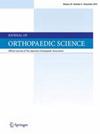吸烟与区域麻醉持续时间的关系 - 一项倾向得分匹配研究。
IF 1.5
4区 医学
Q3 ORTHOPEDICS
引用次数: 0
摘要
背景:以往的研究表明,吸烟者全身麻醉的持续时间较短,但吸烟者区域麻醉的持续时间尚不明确。我们研究了吸烟状况与区域麻醉持续时间之间的关系:方法:我们选取了 2021 年 1 月至 2022 年 6 月期间在区域麻醉下接受下肢矫形手术的 77 例患者,平均年龄为 47.3 岁。其中16名患者为吸烟者,57名患者为非吸烟者。为了平衡患者特征,我们进行了倾向评分匹配。我们的主要研究结果是出现运动或感觉阻滞的时间以及运动或感觉功能完全恢复所需的时间:结果:吸烟组患者出现感觉缺失的时间为 43.4 分钟(标清 35.9 分钟),非吸烟组患者为 39.6 分钟(标清 31.7 分钟)(P = 0.69);吸烟组患者出现运动阻滞的时间为 37.0 分钟(标清 28.4 分钟),非吸烟组患者为 30.1 分钟(标清 24.1 分钟)(P = 0.35)。吸烟组的感觉功能恢复时间为 1146.7 分钟(标清 197.8 分钟),非吸烟组为 1024.6 分钟(标清 177.9 分钟)(p = 0.024)。吸烟组的运动功能恢复时间为 978.3 分钟(标准差 220.5 分钟),非吸烟组为 1090.9 分钟(标准差 222.8 分钟)(p = 0.08)。吸烟组的感觉效应持续时间明显长于非吸烟组:结论:我们发现区域麻醉的起始时间与吸烟无明显关系,但吸烟组的感觉阻滞持续时间明显长于非吸烟组。因此,与非吸烟者相比,应关注吸烟者因感觉阻滞时间过长而导致肢体无感觉的风险,而不是关注麻醉开始时间的延迟。本文章由计算机程序翻译,如有差异,请以英文原文为准。
Association between smoking and duration of regional anesthesia – A propensity score matching study
Background
Previous studies have shown shorter duration of general anesthesia in smokers but it is unclear in regional anesthesia among smokers. We investigated the association between smoking status and the duration of regional anesthesia.
Methods
A total of 77 patients with a mean age of 47.3 years who underwent lower extremity orthopaedic surgery under regional anesthesia between January 2021 and June 2022 were enrolled. Sixteen patients were smokers and 57 patients were non-smokers. Propensity score matching was performed to balance patient characteristics. Our primary outcome was the time to onset of motor or sensory blockade and the duration required for full recovery of motor or sensory function.
Results
The time to sensory loss was 43.4 (SD 35.9) minutes in the smoking group and 39.6 (SD 31.7) minutes in the non-smoking group (p = 0.69), and the time to motor blockade was 37.0 (SD 28.4) minutes in the smoking group and 30.1 (SD 24.1) minutes in the non-smoking group (p = 0.35). The time for recovery of sensory function was 1146.7 (SD 197.8) minutes in the smoking group and 1024.6 (SD 177.9) minutes in the non-smoking group (p = 0.024). The time to recovery of motor function was 978.3 (SD 220.5) minutes in the smoking group and 1090.9 (SD 222.8) minutes in the non-smoking group (p = 0.08). The duration of sensory effect was significantly longer in the smoking group than in the non-smoking group.
Conclusions
We found no significant association in the onset of regional anesthesia, but the duration of sensory blockade was significantly longer in the smoking group than in the non-smoking group. Hence, attention should be paid to the risks of the insensate limb in smokers due to prolonged sensory blockade as compared to non-smokers, rather than be concerned about delays in the onset of anesthesia.
求助全文
通过发布文献求助,成功后即可免费获取论文全文。
去求助
来源期刊

Journal of Orthopaedic Science
医学-整形外科
CiteScore
3.00
自引率
0.00%
发文量
290
审稿时长
90 days
期刊介绍:
The Journal of Orthopaedic Science is the official peer-reviewed journal of the Japanese Orthopaedic Association. The journal publishes the latest researches and topical debates in all fields of clinical and experimental orthopaedics, including musculoskeletal medicine, sports medicine, locomotive syndrome, trauma, paediatrics, oncology and biomaterials, as well as basic researches.
 求助内容:
求助内容: 应助结果提醒方式:
应助结果提醒方式:


